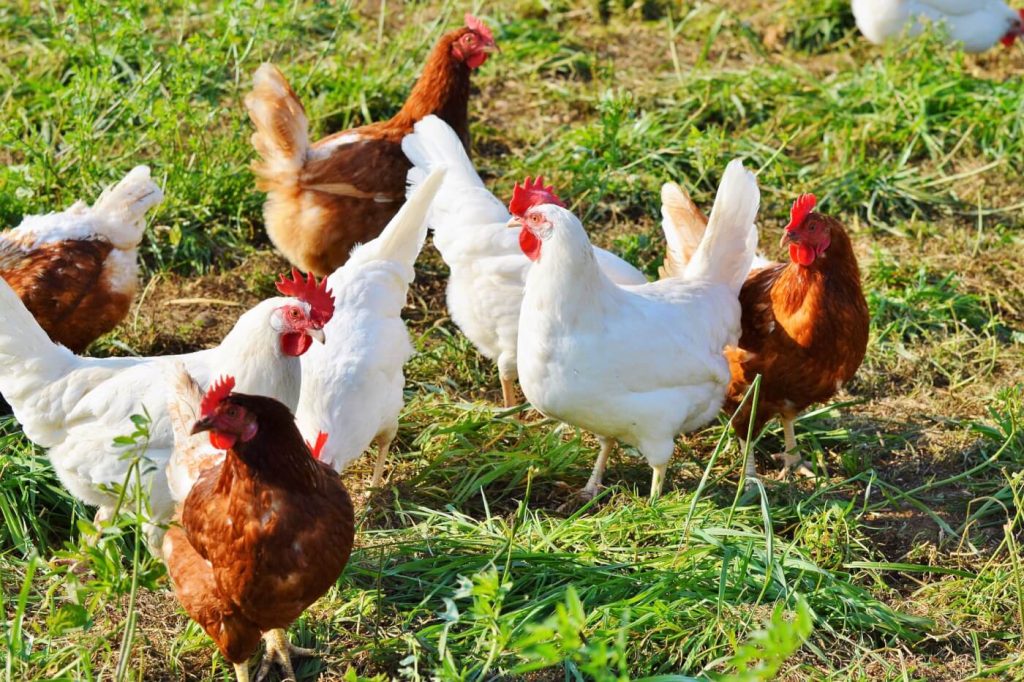Two New Avian Influenza Cases In IOWA

The United States Department of Agriculture’s (USDA) Animal and Plant Health Inspection Service (APHIS) reported two new cases of highly pathogenic avian influenza in a commercial layer flock in Osceola County, Iowa and in a commercial turkey flock in Cherokee County, Iowa. The flocks have been depopulated.
The Iowa Department of Agriculture and Land Stewardship has not released how many birds were affected.
Anyone involved with poultry production from the small backyard to the large commercial producer should review their biosecurity activities to assure the health of their birds, says the USDA. The department has a list of tools producers can use to help with biosecurity measures.
APHIS is working closely with state animal health officials on joint incident responses. State officials quarantined the affected premises, and birds on the properties will be depopulated to prevent the spread of the disease. Birds from the flocks will not enter the food system.
To date, 17,456,802 reported birds have been affected by HPAI.
PREVIOUS CASES
- Connecticut
- New London County
- 155 backyard mixed species (non-poultry)
- New London County
- Delaware
- New Castle County
- 1,146,937 commercial poultry
- 265,000 commercial pullets
- Kent County
- 156,800 commercial broiler chickens
- New Castle County
- Illinois
- McLean County
- 35 non-commercial backyard flock (non-poultry)
- McLean County
- Indiana
- Dubois County
- 16,494 commercial turkeys
- 35,988 commercial turkeys
- 26,625 commercial turkeys
- 29,015 commercial turkeys
- Greene County
- 48,211 commercial turkeys
- 15,400 commercial turkeys
- Dubois County
- Iowa
- Pottawattamie County
- 42 backyard mixed species (non-poultry)
- Buena Vista County
- 49,816 commercial turkeys
- 5,347,511 commercial layers
- 53,804 commercial layers
- 35,500 commercial turkeys
- Taylor County
- 915,925 commercial layers
- Warren County
- 11 non-commercial backyard flock
- Franklin County
- 250,239 commercial pullets
- Pottawattamie County
- Kansas
- Franklin County
- 264 backyard mixed species (poultry)
- Sedgewick County
- 6 backyard mixed species (non-poultry)
- Dickinson County
- 245 backyard mixed species (poultry)
- Mitchell County
- 20 backyard mixed species (non-poultry)
- Franklin County
- Kentucky
- Fulton County
- 231,398 commercial broiler
- Webster County
- 53,286 commercial turkeys
- Fulton County
- Maine
- Knox County
- 96 backyard pet chickens (non-poultry)
- 27 backyard mixed species (non-poultry)
- 8 backyard mixed species (non-poultry)
- 46 backyard mixed species (non-poultry)
- Lincoln County
- 70 backyard mixed species (non-poultry)
- 29 backyard mixed species (non-poultry)
- 3 backyard mixed species (non-poultry)
- York County
- 173 backyard mixed species (non-poultry)
- 38 backyard mixed species (non-poultry)
- Cumberland County
- 150 backyard mixed species (non-poultry)
- Washington County
- 18 backyard mixed species (non-poultry)
- Knox County
- Maryland
- Cecil County
- 664,061 commercial layer
- 496,272 commercial layer
- 315,000 commercial pullet chickens
- Queen Anne’s County
- 150,000 commercial broiler chickens
- Cecil County
- Massachusetts
- Berkshire County
- 240 backyard mixed species (non-poultry)
- Berkshire County
- Michigan
- Kalamazoo County
- 43 backyard mixed species (non-poultry)
- Monroe County
- 175 backyard mixed species flock (non-poultry)
- Macomb County
- 86 backyard mixed species flock (non-poultry)
- Kalamazoo County
- Minnesota
- Meeker County
- 240,000 commercial turkeys
- Mower County
- 20 backyard mixed species flock (non-poultry)
- Stearns County
- 36,000 commercial turkeys
- Kandiyohi County
- 40,000 commercial turkeys
- Lac Qui Parle County
- 44,000 commercial turkeys
- Meeker County
- Missouri
- Stoddard County
- 294,818 commercial broiler chickens
- Bates County
- 51 backyard mixed species (non-poultry)
- Jasper County
- 25,015 commercial turkeys
- Lawrence County
- 37,770 commercial turkeys
- Ralls County
- 75 backyard mixed species (non-poultry)
- Gentry County
- 113 backyard mixed species (non-poultry)
- Stoddard County
- Nebraska
- Merrick County
- 90 non-commercial backyard (non-poultry)
- Butler County
- 570,000 commercial broilers
- 417,000 commercial broilers
- Holt County
- 53 backyard mixed species (non-poultry)
- Merrick County
- New Hampshire
- Rockingham County
- 80 non-commercial backyard flock (non-poultry)
- Rockingham County
- New York
- Suffolk County
- 8 backyard pet chickens (non-poultry)
- 4,000 commercial upland game producer flock
- 408 backyard mixed species (non-poultry)
- Ulster County
- 65 backyard mixed species (non-poultry)
- Dutchess County
- 195 captive wild birds (non-poultry)
- Monroe County
- 40 backyard mixed species (non-poultry)
- Suffolk County
- North Carolina
- Johnston County
- 32,137 commercial turkeys
- Johnston County
- North Dakota
- Kidder County
- 26 backyard chickens (non-poultry)
- Kidder County
- Ohio
- Franklin County
- 15 backyard mixed species (non-poultry)
- Franklin County
- South Dakota
- Bon Homme County
- 150 backyard mixed species (non-poultry)
- 51,000 commercial turkeys
- Charles Mix County
- 47,330 commercial mixed species
- 36,000 commercial turkeys
- 57,100 commercial turkeys
- Clark County
- 42,000 commercial turkeys
- Edmunds County
- 31,730 commercial turkeys
- 22,309 commercial turkeys
- Hutchinson County
- 49,000 commercial turkeys
- 39,000 commercial turkeys
- 46,700 commercial turkeys
- Kingsbury County
- 39,000 commercial turkeys
- 124,000 commercial layer chickens
- Hanson County
- 20,233 commercial turkeys
- 102,250 commercial turkeys
- Beadle County
- 29,900 commercial turkeys
- 50,000 commercial turkeys
- Jerauld County
- 45,000 commercial turkeys
- McPherson County
- 43,500 commercial turkeys
- Spink County
- 46,300 commercial turkeys
- Bon Homme County
- Virginia
- Fauquier County
- 90 backyard mixed species (non-poultry)
- Fauquier County
- Wisconsin
- Jefferson County
- 2,757,800 commercial layer chickens
- Jefferson County
- Wyoming
- Johnson County
- 38 backyard mixed species (non-poultry)
- Park County
- (Pending) backyard mixed species (non-poultry)
- Johnson County
Signs of avian influenza include: birds dying without clinical signs; lack of energy; decreased egg production; soft-shelled or misshapen eggs; swelling or purple discoloration of the head, eyelids, comb, and hocks; nasal discharge; coughing; sneezing; incoordination; and diarrhea. The USDA has a resource with images to help identify discoloration and other clinical signs.
If farmers have a bird they believe has passed away because of avian influenza, state officials encourage them to double bag the bird and refrigerate to preserve it for testing.
Avian influenza is not a foodborne illness and does not pose a food-safety risk.
Source: https://www.agriculture.com/livestock/poultry/avian-influenza-reported-in-michigan-in-non-poultry-flock

 Previous Post
Previous Post Next Post
Next Post